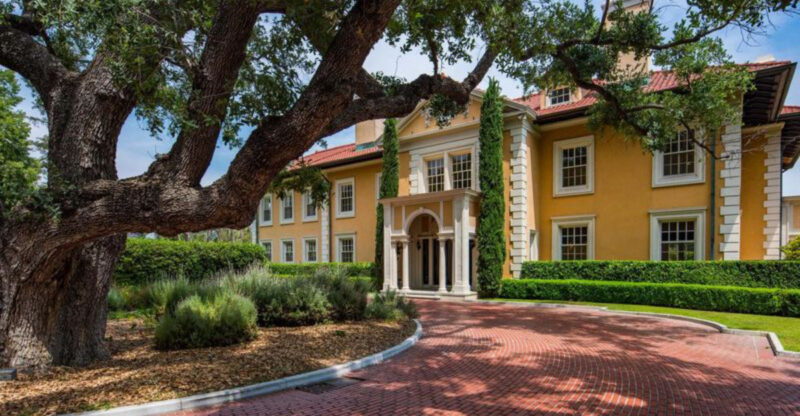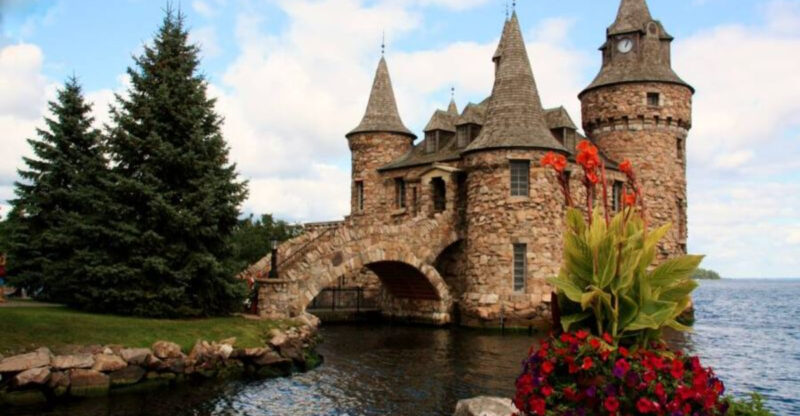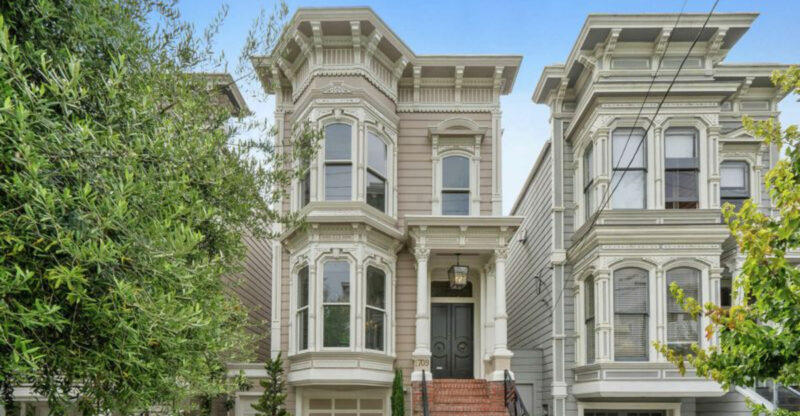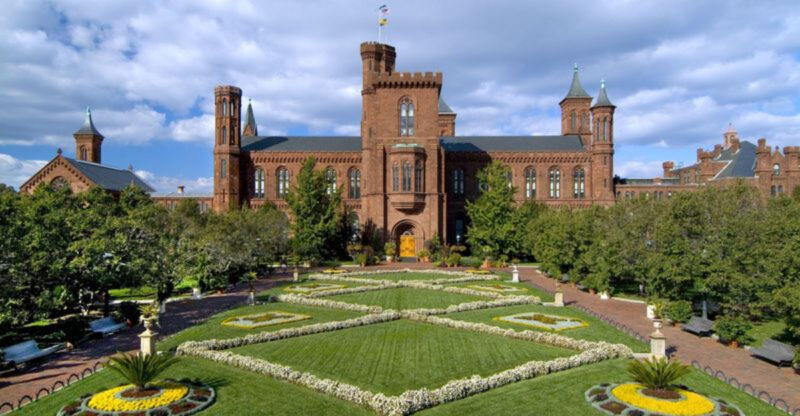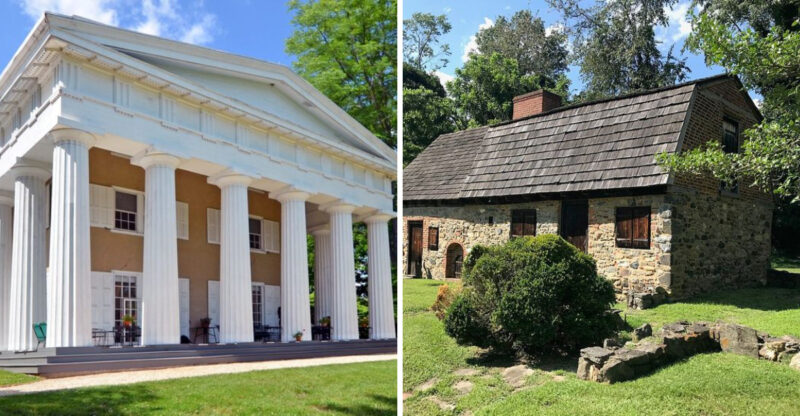22 Millionaire Mansions In The US You’ve Never Heard Of (But Should)

Hidden across America are architectural treasures that even the most dedicated mansion enthusiasts might have missed. These spectacular homes combine history, opulence, and fascinating stories of America’s wealthiest families.
From gilded age masterpieces to modern marvels of design, these lesser-known mansions offer glimpses into extraordinary lifestyles most of us can only dream about.
1. Nemours Estate – Wilmington, Delaware

Sprawling across 300 acres, this French-style château was built by Alfred I. duPont for his second wife in 1910. The mansion boasts 77 rooms filled with rare antiques and original artwork.
Perhaps most impressive are the gardens, modeled after those at Versailles, featuring the largest formal French gardens in America with reflecting pools and gilded sculptures.
2. Grey Towers Castle – Glenside, Pennsylvania

Sugar magnate William Welsh Harrison commissioned this medieval-inspired fortress in 1893. Architect Horace Trumbauer created a fantastical 40-room castle with gargoyles, hidden passageways, and a grand marble staircase.
Today it serves as the administration building for Arcadia University, where students study beneath stained glass windows and carved wooden ceilings.
3. Glen Tonche – Ulster County, New York
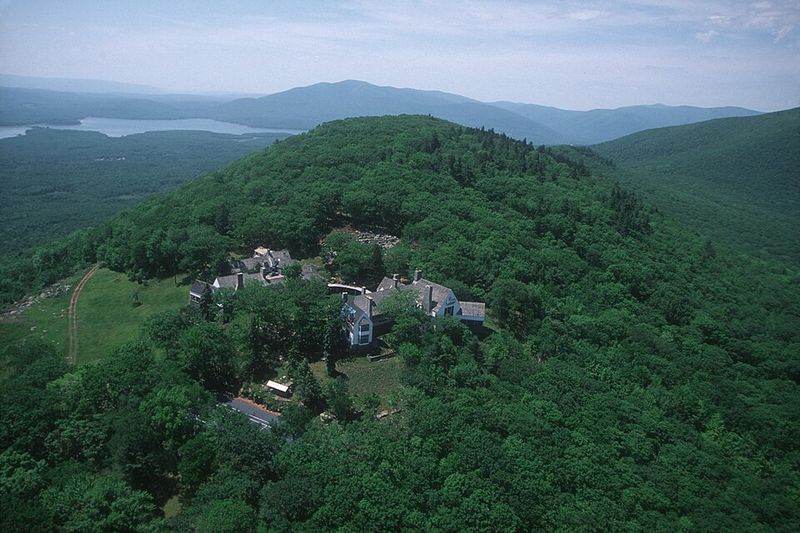
Railroad executive Samuel Coykendall built this rustic masterpiece atop a mountain in 1883. Natural materials dominate the design, with locally quarried stone walls and massive timber beams harvested from the surrounding forest.
Recently restored to its former glory, the property features a 12,000-square-foot main house with breathtaking views of the Catskill Mountains and Ashokan Reservoir.
4. Rough Point – Newport, Rhode Island
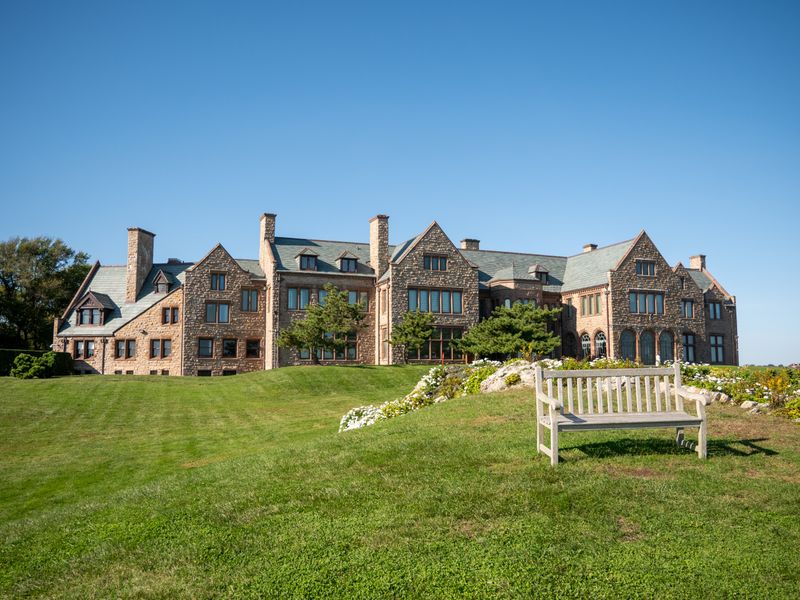
Tobacco heiress Doris Duke’s oceanfront retreat stands at the edge of Newport’s famous Cliff Walk. Unlike other Newport mansions, this one remained a private home until 1999, preserving its lived-in character.
Duke’s eclectic collections fill the rooms – Belgian tapestries hang near Islamic ceramics, while her beloved pet camels once roamed the grounds during summer months.
5. Lyndhurst Mansion – Tarrytown, New York

Gothic Revival architecture reaches its pinnacle in this dramatic Hudson River estate. Designed in 1838 by Alexander Jackson Davis, the mansion looks like it emerged from a Victorian ghost story.
Railroad tycoon Jay Gould added his touch with rare art and furnishings. The mansion’s asymmetrical design, featuring pointed arches and decorative tracery, creates an atmosphere both romantic and slightly mysterious.
6. Ventfort Hall – Lenox, Massachusetts

Banking fortune heir George Morgan and his wife Sarah built this Jacobean-style mansion as a summer home in 1893. The 28,000-square-foot residence features 28 rooms, including a grand hall with a spectacular three-story staircase.
After decades of neglect, dedicated preservationists saved this architectural gem from demolition. Today it houses the Museum of the Gilded Age, showcasing the lavish lifestyle of America’s industrial elite.
7. Stan Hywet Hall – Akron, Ohio
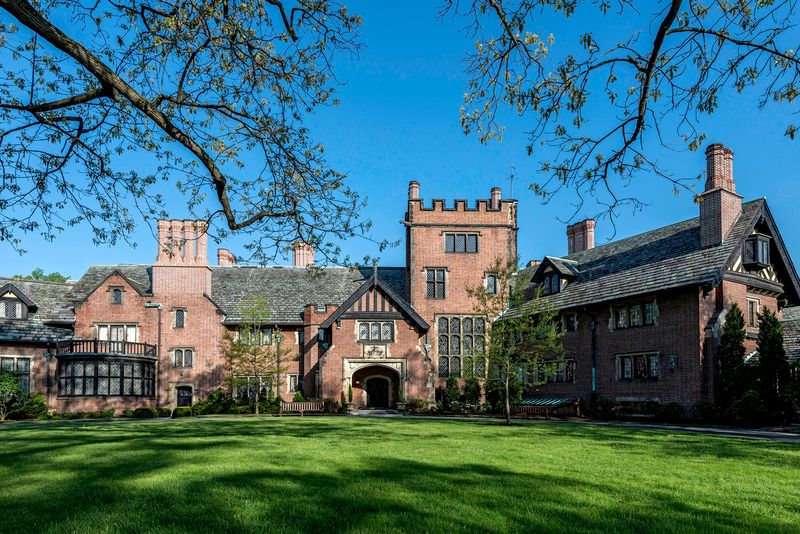
Goodyear Tire founder F.A. Seiberling created this Tudor Revival masterpiece between 1912-1915. The name means “stone quarry” in Old English, referencing the property’s history before becoming one of America’s largest private homes.
Famous landscape architect Warren Manning designed the grounds, including a Japanese garden, English garden, and lagoon. The estate encompasses 70 acres of meticulously maintained gardens and natural areas.
8. Swannanoa Palace – Afton, Virginia
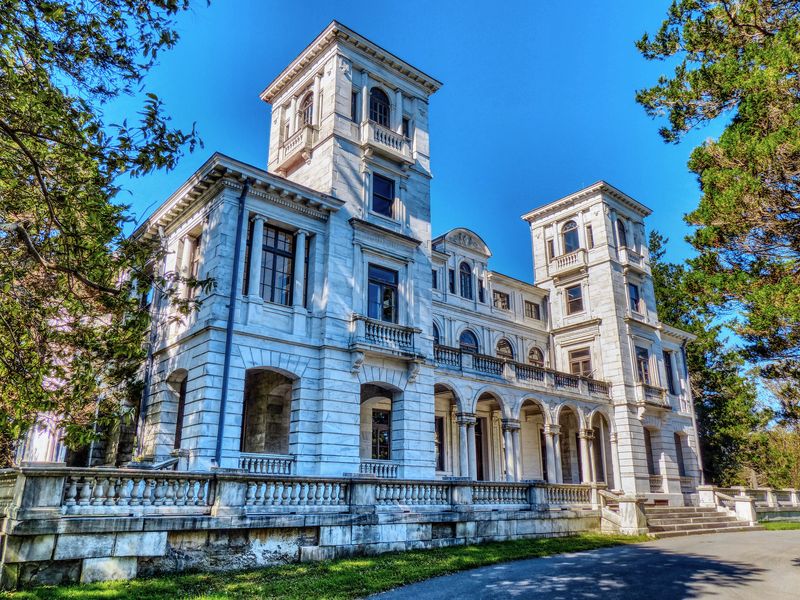
Railroad millionaire James Dooley gifted this Italian Renaissance palace to his wife as a token of love. Completed in 1912, the mansion sits atop the Blue Ridge Mountains with panoramic valley views.
The centerpiece is a 4,000-piece Tiffany stained glass window portrait of Mrs. Dooley. White Georgian marble, imported Italian marbles, and gold plumbing fixtures showcase the no-expense-spared approach to this mountain retreat.
9. Cairnwood Estate – Bryn Athyn, Pennsylvania
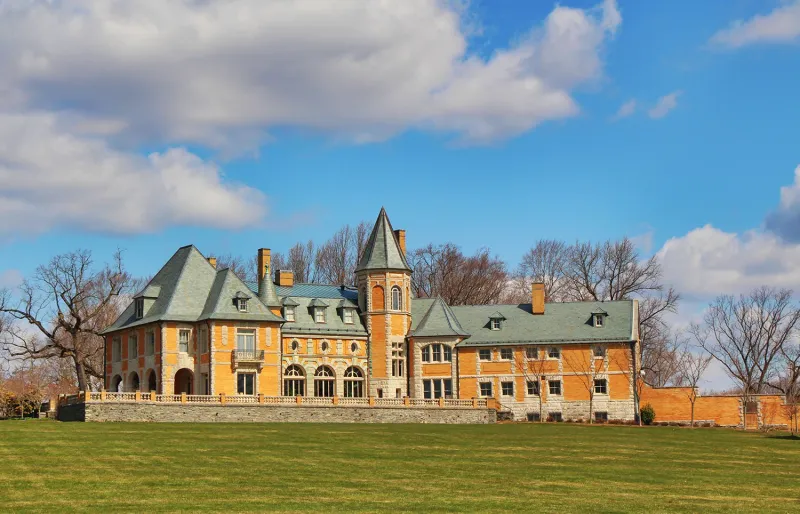
Industrialist John Pitcairn commissioned this Beaux-Arts style country home in 1895. Acclaimed architectural firm Carrère and Hastings (who designed the New York Public Library) created this elegant limestone mansion.
Religious significance permeates the estate, built adjacent to Bryn Athyn Cathedral. The Pitcairn family were founding members of the New Church (Swedenborgian), and the home reflects their spiritual values through thoughtful design and symbolic elements.
10. Iviswold Castle – Rutherford, New Jersey
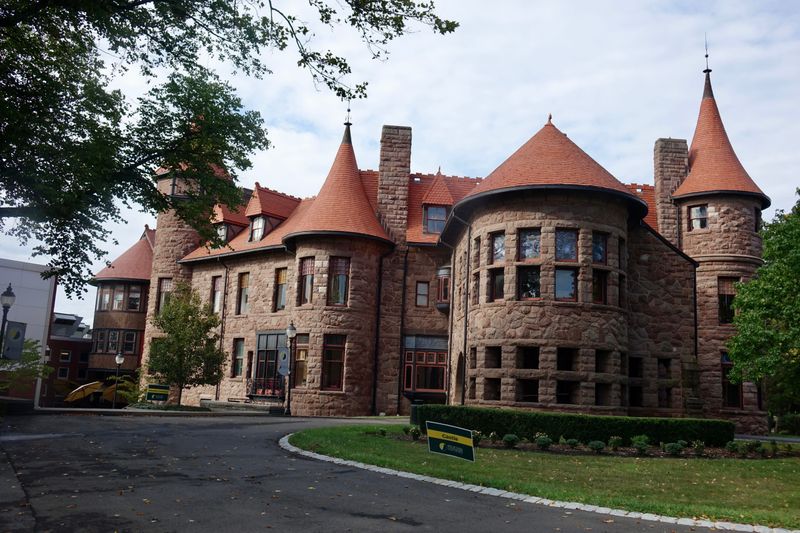
Textile magnate David Ivison transformed a simple farmhouse into this Victorian fantasy castle in 1887. The eclectic design combines Queen Anne, Romanesque, and Gothic elements into a whimsical 15-room mansion.
After serving various purposes including a military academy and university building, a meticulous $9 million restoration revealed hidden treasures. Workers discovered original hand-painted ceilings and ornate woodwork concealed beneath decades of institutional modifications.
11. Glenview Mansion – Yonkers, New York
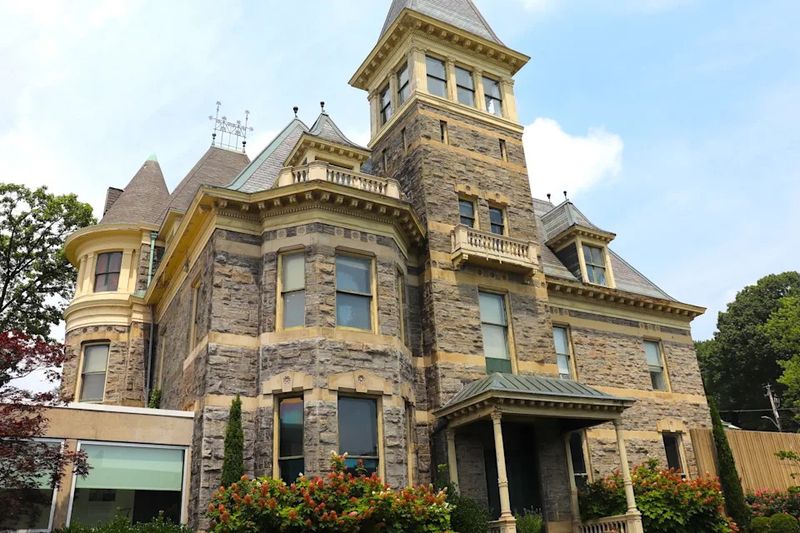
Banker John Bond Trevor commissioned this Victorian mansion in 1877. The 28-room home showcases six distinct architectural styles, from Romanesque to Egyptian Revival, creating a unique aesthetic time capsule.
Most remarkable is the Great Hall, featuring hand-carved woodwork, stained glass, and a ceiling adorned with 23-karat gold leaf. The mansion now houses the Hudson River Museum, blending historic preservation with contemporary art.
12. Filoli Estate – Woodside, California

Mining magnate William Bourn built this Georgian revival mansion in 1917, naming it with his personal credo: “Fight for a just cause; Love your fellow man; Live a good life.”
Set against the dramatic Santa Cruz Mountains, the 54,000-square-foot home is surrounded by 16 acres of formal gardens. The estate gained modern fame as the Carrington mansion in the TV series “Dynasty” opening credits.
13. Hammond Castle – Gloucester, Massachusetts

Eccentric inventor John Hays Hammond Jr. built this medieval-style castle between 1926 and 1929 to house his collection of Roman, medieval, and Renaissance artifacts. The castle includes a great hall, drawbridge, and secret passages.
Known as “The Father of Remote Control,” Hammond held over 400 patents. His castle laboratory contained innovations that would later become standard in televisions and guided missiles.
14. Pittock Mansion – Portland, Oregon
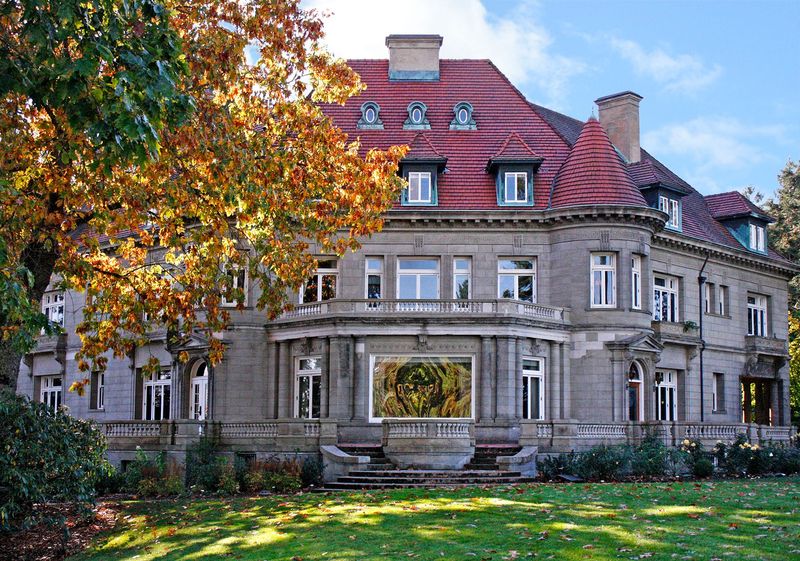
Newspaper publisher Henry Pittock built this French Renaissance-style château in 1914. Perched 1,000 feet above Portland, the mansion offers spectacular views of the city and Mount Hood.
Remarkably progressive for its time, the home featured intercoms, a central vacuum system, and indirect lighting. The 46-room estate showcases the family’s pioneering spirit with innovative technology blended seamlessly with Old World craftsmanship.
15. Oheka Castle – Huntington, New York
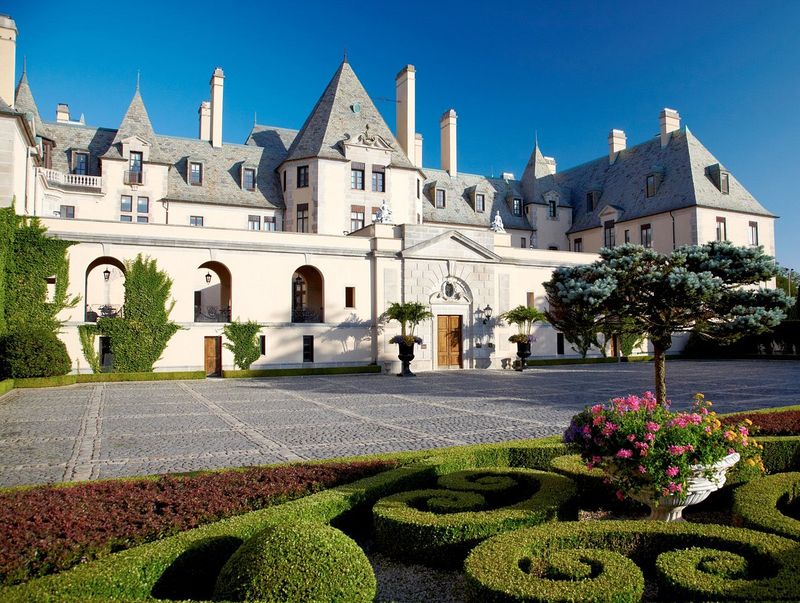
Financier Otto Hermann Kahn built the second-largest private home in America in 1919. The 127-room French-style château sits on 443 acres, originally requiring a staff of 126 people to maintain.
After falling into disrepair, developer Gary Melius purchased the crumbling estate for just $1.5 million in 1984. His $40 million restoration transformed the mansion into a luxury hotel and popular wedding venue featured in numerous films and Taylor Swift’s “Blank Space” video.
16. Nemacolin Castle – Brownsville, Pennsylvania
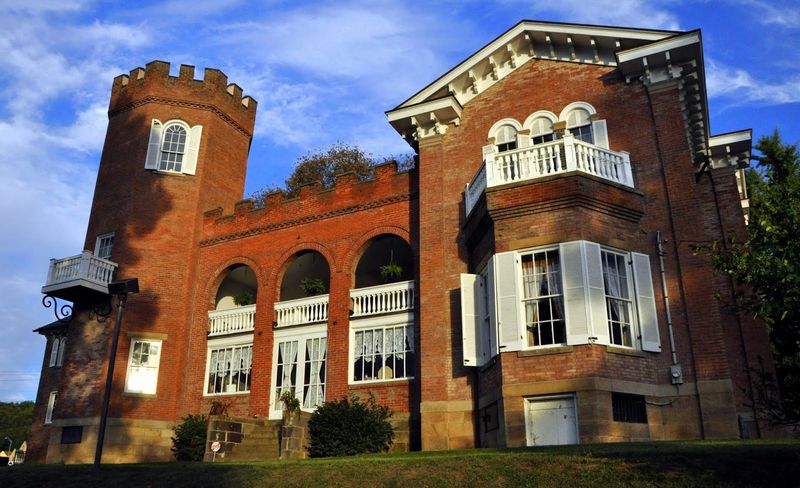
Merchant Jacob Bowman began building this stone fortress in 1789 as a trading post along the Monongahela River. Over generations, the Bowman family expanded it into a 22-room castle with Gothic, Victorian, and Queen Anne elements.
Local legends claim the castle harbors several ghosts, including the spirit of Jacob’s daughter Elizabeth. Paranormal investigators regularly visit, making it a favorite destination for ghost hunters seeking evidence of supernatural residents.
17. The Elms – Newport, Rhode Island

Coal baron Edward Berwind commissioned this French-inspired summer cottage in 1901. Designed to rival the great châteaux of France, the mansion cost $1.4 million (equivalent to over $43 million today).
Most fascinating is the elaborate underground tunnel system where servants could move invisibly throughout the property. The mansion’s technological innovations included one of America’s first electrical distribution systems and an ice-making plant for year-round refrigeration.
18. Vizcaya Museum & Gardens – Miami, Florida
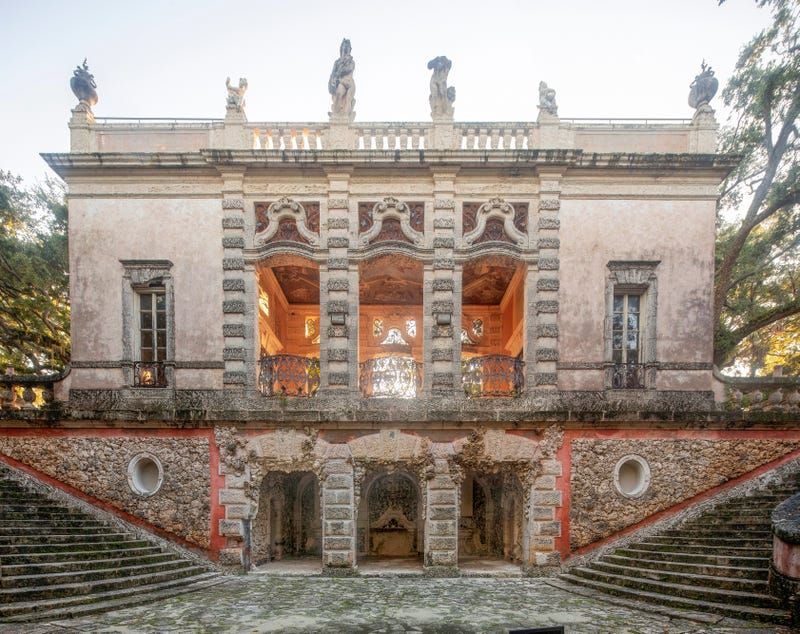
International Harvester vice president James Deering created this Mediterranean Revival villa between 1914-1922. The waterfront estate combines European aesthetics with tropical surroundings in a uniquely Floridian interpretation of Italian Renaissance design.
Deering filled the mansion with over 2,500 antique art pieces and furnishings. The 10 acres of formal gardens include a maze garden, fountains, and a stone barge jutting into Biscayne Bay that serves as both breakwater and decorative element.
19. Salisbury House – Des Moines, Iowa
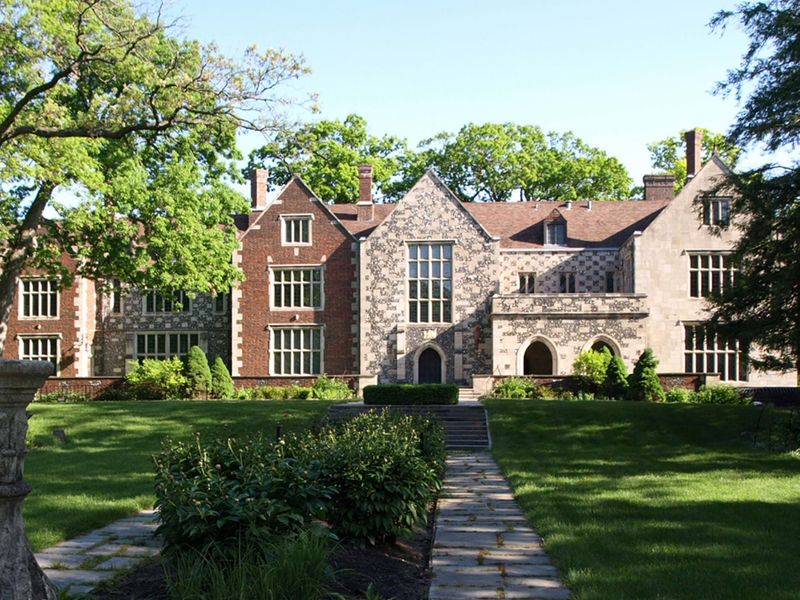
Cosmetics magnate Carl Weeks modeled his dream home after King’s House in Salisbury, England. Completed in 1928, the 42-room Tudor, Gothic, and Carolean-style mansion incorporates materials from destroyed European buildings.
Weeks and his wife Edith filled their home with a museum-quality collection of art, rare books, and musical instruments. The library houses 3,000 rare books including first editions of Thoreau, Hawthorne, and a 1513 edition of Chaucer’s works.
20. Reed House – Marion, Massachusetts
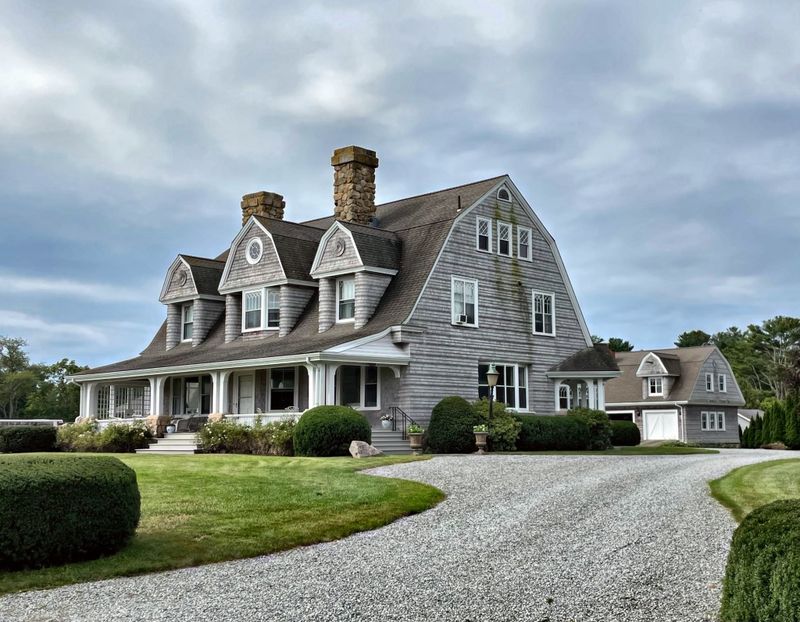
Banking executive Richard Reed commissioned this shingle-style summer home in 1902. The oceanfront estate exemplifies the relaxed yet refined aesthetic of New England coastal architecture.
Unlike more ostentatious mansions, Reed House charms with understated elegance. Wide verandas wrap around the home, designed for enjoying sea breezes. Interior spaces feature hand-carved paneling in native woods and spectacular views of Buzzards Bay.
21. Blairsden – Peapack-Gladstone, New Jersey
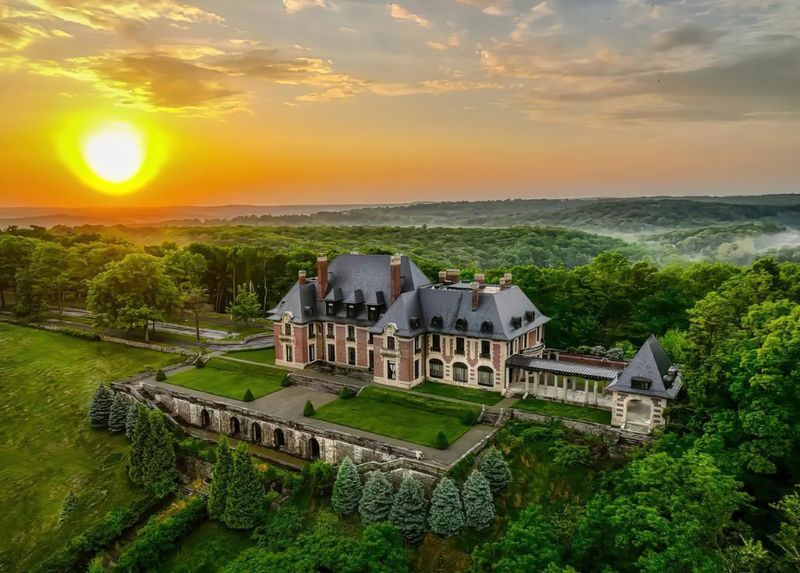
Investment banker C. Ledyard Blair constructed this 62,000-square-foot Beaux-Arts mansion between 1897-1903. The estate required an army of 300 laborers to transform the mountainside into terraced gardens and a level building site.
After serving as a Catholic retreat center for decades, the mansion was purchased for $4.5 million in 2012. A multi-million dollar restoration returned the 38-room limestone palace to its original grandeur, preserving one of America’s finest examples of Gilded Age architecture.
22. Fonthill Castle – Doylestown, Pennsylvania
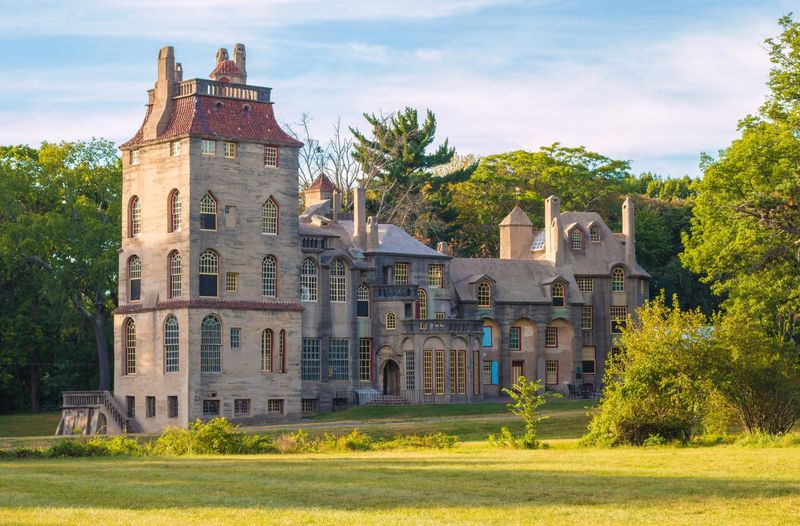
Eccentric archaeologist and tile maker Henry Mercer built this concrete castle between 1908-1912 as both home and showroom for his handcrafted decorative tiles. The 44-room medieval-inspired structure contains 200 windows of varying sizes and shapes.
Mercer designed the castle without blueprints, describing his vision to workers day by day. Interior walls, floors and ceilings display over 10,000 handmade tiles depicting historical events, folk tales, and Biblical scenes.

